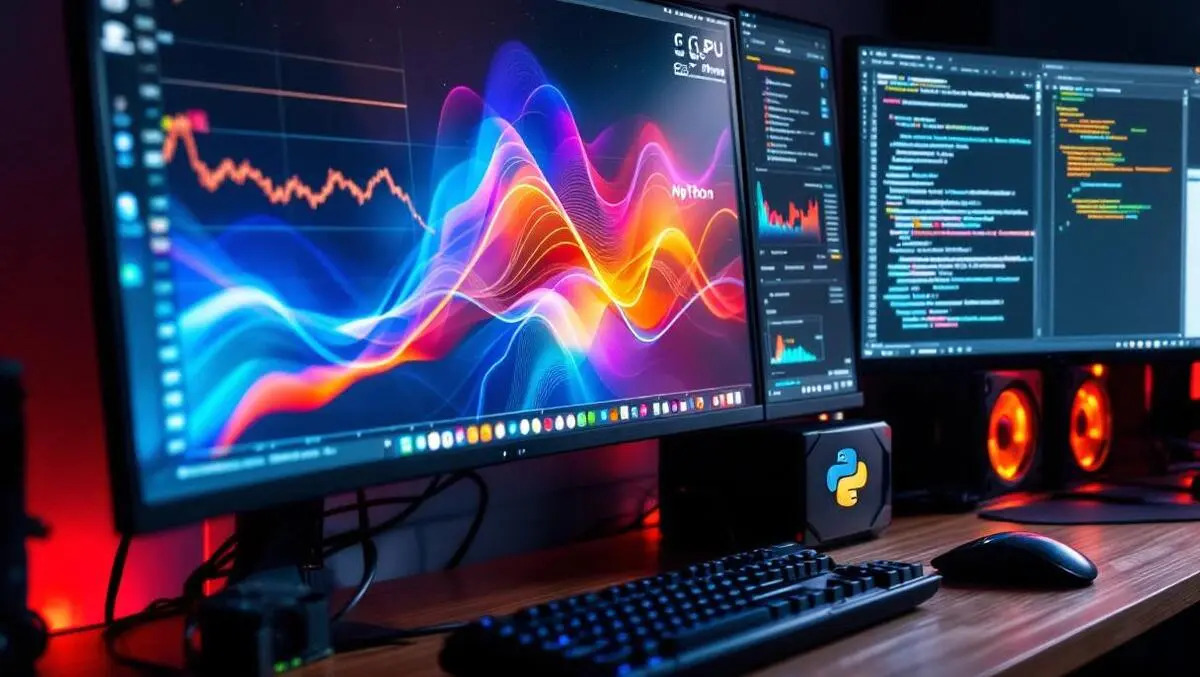ArrayFire has announced version 3.10 of its GPU kernel library, featuring a new Python interface and expanded compatibility across major hardware backends.
This latest release introduces a Python interface designed to comply with the Data API Standard, aiming to enable developers to switch from NumPy to ArrayFire with minimal changes while gaining computational performance benefits. The interface covers CUDA, OpenCL, oneAPI, and CPU backends, widening its applicability for technical computing in Python environments.
Python integration
According to the company, early benchmarking indicates that the new Python interface provides performance gains compared to other GPU-Python frameworks. These improvements span operations in scientific computing, signal processing, and deep learning domains. The compliance with the Data API Standard is intended to streamline code migration and simplify adoption for developers already familiar with NumPy or similar libraries.
“Our goal with ArrayFire 3.10 was to unify the GPU and Python communities through the Data API Standard. Developers can now write code once, run anywhere-on any GPU or accelerator backend-with state-of-the-art performance and numerical reliability.”
This was stated by Gallagher Pryor, Co-founder of ArrayFire, highlighting the intent behind the latest update.
Expanded type support
Version 3.10 of ArrayFire introduces comprehensive support for signed int8 data types as well as expanded support for fp16, which is also known as half-precision floating-point. This functionality is meant to facilitate interoperability and maximise hardware-specific optimisations around compact data formats and reduced-precision inference, a key capability for deep learning and edge computing workloads. The extended type support is aligned with industry trends towards energy-efficient, high-throughput computing on next-generation hardware.
Compatibility extensions
ArrayFire v3.10 also includes compatibility updates, supporting CUDA versions 12.3 through 12.9 and oneAPI 2025.2. According to ArrayFire, these updates are in line with the library’s approach to maintaining cross-platform support for both NVIDIA and Intel accelerator toolchains, ensuring adoption by users who work with the latest hardware releases. This compatibility is expected to minimise integration hurdles for developers seeking to leverage new GPU and accelerator platforms.
Stability improvements
The release incorporates a set of stability improvements and bug fixes, many of which were contributed by members of ArrayFire’s open-source community. The company cites enhanced numerical stability, quicker just-in-time (JIT) fusion for kernels, and improved error handling as highlights of this release. These upgrades are expected to improve reliability and user experience across technical workloads.
Reflecting on the broader adoption of the technology, Natan Biesmans, CEO of G2CPU High Performance Compute Toolkit for LabVIEW, stated:
“ArrayFire has proven to be an invaluable foundation to bring GPU computing into the test and measurement industry. Its versatile cross-platform compatibility and unique JIT compiler have made the highly technical field of GPU computing more accessible than ever before. This is why we trust ArrayFire as the engine for our product.”
Role in numerical computing
Since 2007, ArrayFire has been used across multiple sectors, including aerospace, healthcare, finance, and scientific research. Its high-level array programming model is designed to provide ease of use while aiming to retain performance, driven by features such as kernel fusion and just-in-time (JIT) compilation. One of ArrayFire’s key points of differentiation is its single API, which extends across all its supported backends, allowing organisations to deploy solutions from laptops to high-performance clusters with minimal reconfiguration.
The open-source library continues to rely on contributions from its user base worldwide, with ongoing efforts to expand its feature set, support new platforms, and deliver optimisation for performance-sensitive applications.
ArrayFire v3.10 is available for immediate use by developers and organisations. High-resolution media assets, including screenshots and performance charts, have also been made available for editorial use.
